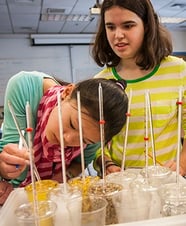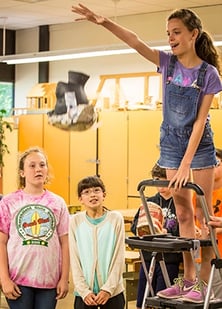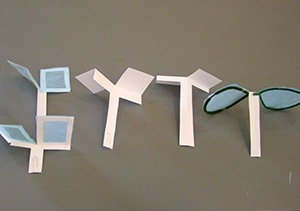 Here at EiE, we’ve found that kids are most engaged with engineering when they’re working on problems that connect to their own lives. That’s why we designed our out-of-school-time curricula, Engineering Adventures and Engineering Everywhere, to guide them through the engineering design process as it applies to a real-world problem. We’ve already put together a list of additional real-world resources for each Engineering Adventures unit (Engineering Everywhere resources are under development!), but the EiE staff is always on the lookout for even more relevant content to help inspire your young engineers. Check out these compelling connections, share them with your kids, and show them that you can find engineering . . . everywhere!
Here at EiE, we’ve found that kids are most engaged with engineering when they’re working on problems that connect to their own lives. That’s why we designed our out-of-school-time curricula, Engineering Adventures and Engineering Everywhere, to guide them through the engineering design process as it applies to a real-world problem. We’ve already put together a list of additional real-world resources for each Engineering Adventures unit (Engineering Everywhere resources are under development!), but the EiE staff is always on the lookout for even more relevant content to help inspire your young engineers. Check out these compelling connections, share them with your kids, and show them that you can find engineering . . . everywhere!
Safety First
In our Engineering Everywhere unit Put a Lid on It: Engineering Safety Helmets, young engineers use their knowledge of the brain and concussions to design a helmet that will protect a model head. Outside of the classroom, engineers at VICIS are tackling the need to reduce sport-related concussions head-on with ZERO1, a new helmet designed to be safer than current helmet technology. Start a conversation about the connections between engineering and sports safety by showing your kids this article that delves into the criteria and constraints engineers are grappling with to design a safer helmet.
Up in the Air
 Kids design their own airborne technologies in our aeronautical engineering unit, The Sky’s the Limit: Engineering Flying Technologies. They explore the unique capabilities of technologies that can take flight, like the ability to observe and photograph places where it would be dangerous for humans to go. Engineers at the University of Illinois and Caltech have designed their own flying technology—one that mimics the flight of a bat! The designers of the “bat bot” hope that their technology can one day be used to survey places like construction sites where more traditional flying devices may have trouble hovering. Share an article about this bioinspired invention with your kids to show them that design inspiration can come from unlikely places.
Kids design their own airborne technologies in our aeronautical engineering unit, The Sky’s the Limit: Engineering Flying Technologies. They explore the unique capabilities of technologies that can take flight, like the ability to observe and photograph places where it would be dangerous for humans to go. Engineers at the University of Illinois and Caltech have designed their own flying technology—one that mimics the flight of a bat! The designers of the “bat bot” hope that their technology can one day be used to survey places like construction sites where more traditional flying devices may have trouble hovering. Share an article about this bioinspired invention with your kids to show them that design inspiration can come from unlikely places.
Achoo!
 In Outbreak Alert: Engineering a Pandemic Response, youth work to prevent the spread of a contagious disease. They accomplish this by engineering an antiviral that will block a model virus from attaching to a cell. In the real world, biomedical engineers are working on many different technologies to prevent the spread of disease. One enterprising engineering professor at The University of Texas at Arlington, Perena Gouma, has created a monitor that uses biomarkers to detect flu virus in the breath of a patient. Show your kids this article about her innovative device to spark a conversation about how complex problems may require many different technologies to solve them.
In Outbreak Alert: Engineering a Pandemic Response, youth work to prevent the spread of a contagious disease. They accomplish this by engineering an antiviral that will block a model virus from attaching to a cell. In the real world, biomedical engineers are working on many different technologies to prevent the spread of disease. One enterprising engineering professor at The University of Texas at Arlington, Perena Gouma, has created a monitor that uses biomarkers to detect flu virus in the breath of a patient. Show your kids this article about her innovative device to spark a conversation about how complex problems may require many different technologies to solve them.
Have you found any inspiring engineering stories in the news? Do you have a different strategy to relate engineering to kids’ real-world experience? Let us know in the comments below!








